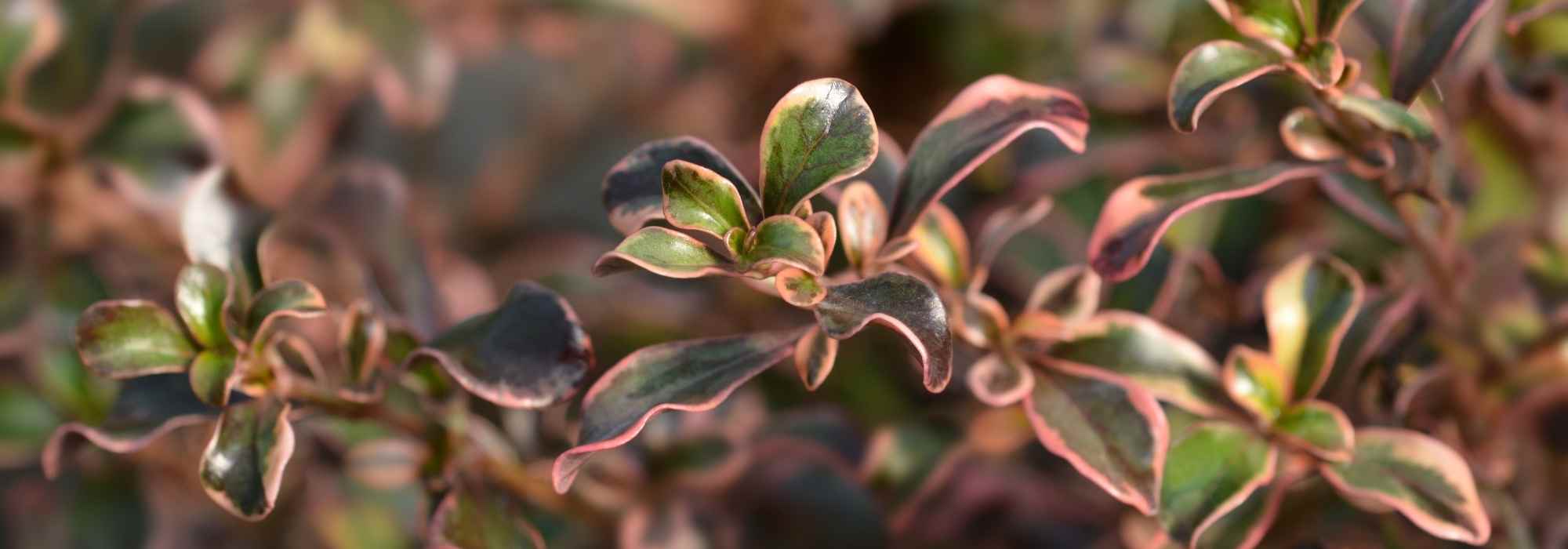
Coprosma, Mirror Plant: planting, cultivation
Contents
Coprosma in a nutshell
- It is a remarkable evergreen bush with striking foliage
- Its glossy leaves in various colours change with the seasons
- Frost-sensitive, it should be grown in the ground in our mild regions or in a pot
- It is an ideal young plant for coastal gardens
- Nicknamed “mirror plant”, it is a ball of light for the garden or terrace!
A word from our expert
The Coprosma is a small, frost-sensitive evergreen bush with persistent foliage that changes colour throughout the seasons. Its leaves are so glossy that they have earned the shrub the nickname “Mirror Plant”, as they reflect light beautifully. This sparkling beauty has made varieties such as Coprosma (x) repens ‘Fire Burst’, ‘Evening Glow’ with its multicoloured display, ‘Rainbow Surprise’, Coprosma (x) robusta ‘Pina Colada’ with its variegated green and orange leaves, and ‘Pacific Sunset’ with its bright red foliage, quite popular. If the plant fruits, it will reward you with small, decorative vermilion-orange berries.
It forms a small, rounded bush that is extremely glossy and beautiful in all seasons. There are very compact Coprosmas that do not exceed 50 cm in height, making them perfect for rockeries, groundcover, or pots. The larger varieties (up to 1.5 m in height) make stunning specimens for creating an evergreen hedge.
Frost-sensitive (around -5°C) but very drought-resistant and tolerant of sea spray, it is a shrub best suited for coastal fringes that are spared from severe frosts. Elsewhere, it will thrive beautifully in a large pot on the terrace or balcony, provided it is sheltered from frost in winter. It prefers poor, well-drained soils without lime and requires minimal care.
Discover this shrub that brings light, originality, and colour to your garden or terrace throughout the seasons!
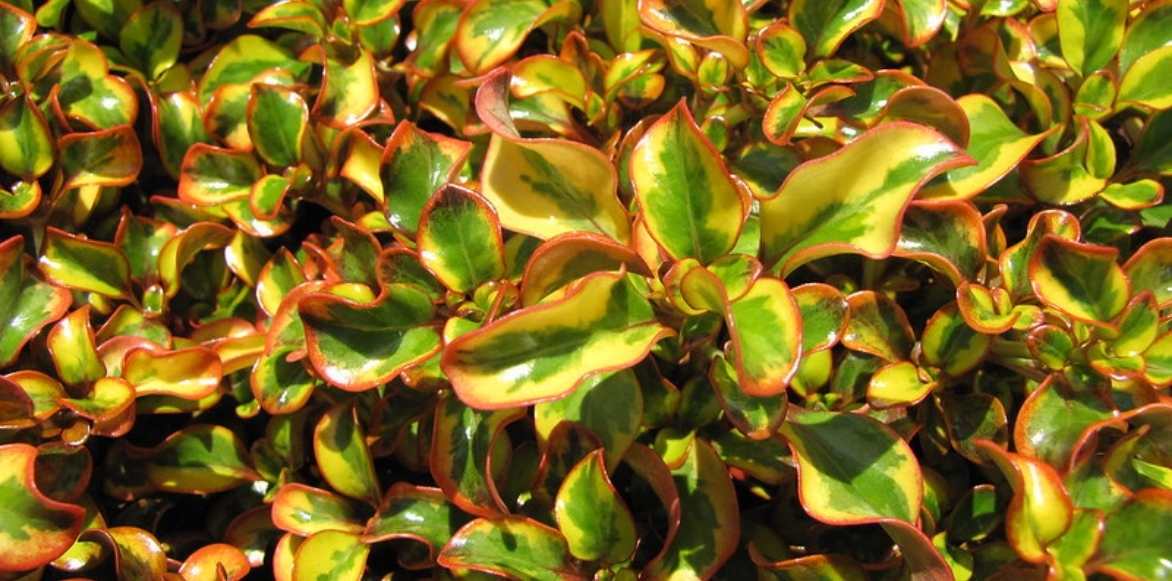
Coprosma repens (©Forest and Kim Starr)
Botany
Botanical data
- Latin name Coprosma
- Family Rubiaceae
- Common name mirror plant
- Flowering August to September
- Height 0.50 to 1.50 m
- Exposure Sun
- Soil type Light, well-drained
- Hardiness -3 to -8 °C
The Coprosma is a small evergreen bush from the Rubiaceae family, just like Gardenia. The genus Coprosma is formed of 90 species native to Oceania, particularly New Zealand, and many hybrids that have recently entered the European horticultural market. The bush has a particularly bushy, upright, and compact habit. In 4 to 5 years, it forms a bush reaching about 50 cm to approximately 1.50 m in height depending on the varieties. In its native habitat, this bush can grow up to 3 m tall.
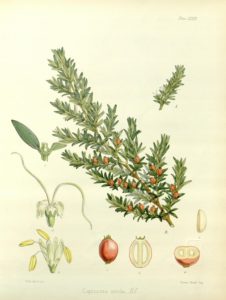
Coprosma nitida, botanical plate circa 1840
The Coprosma is distinguished by beautiful glossy foliage, with varied and changing colours that persist in winter, brightening the garden throughout the year. The flexible, ramified stems bear small opposite leaves, ovate to lanceolate, leathery, shiny on the top, and matte on the underside. They are marked by a lighter midrib. The leaf colours vary according to the cultivars, ranging from light green to chocolate brown touched with bright green or pink, as well as red, bronze, or purple. Some varieties display multicoloured foliage, such as the Coprosma ‘Evening Glow’. With each change of season, their colours evolve. Their beautiful attire is lighter in summer, darkening and reddening with the cold. The overall effect is a sparkling bush that reflects the light, hence its nickname “mirror plant.”
The summer flowering is insignificant. From August to September, it takes the form of clusters of small tubular white-green flowers with prominent stamens. The Coprosma is a dioecious plant, meaning that fruiting only occurs if male and female plants are grown side by side. If this is the case, the flowers are then followed by globe-shaped berries of vermilion orange that delight birds. Very decorative, these scarlet drupes harmonise with the foliage, often reddened by autumn.
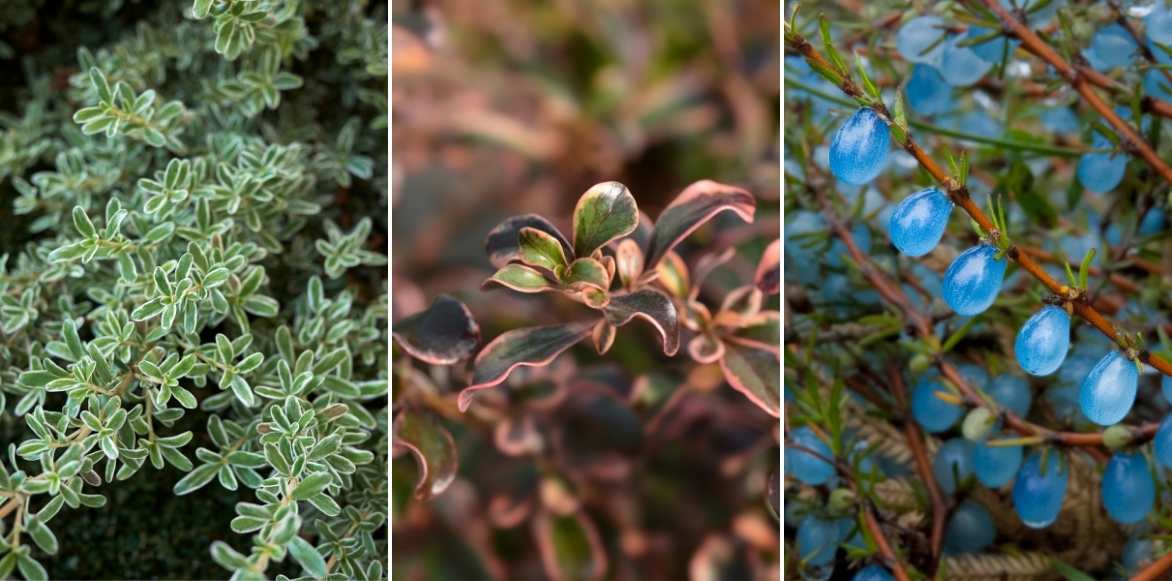
Coprosma kirkii ‘Variegata’, Coprosma ‘Rainbow Sunrise’, and to the right fruits of Coprosma brunnea
Read also
Using evergreen shrubs in the gardenMain species and varieties
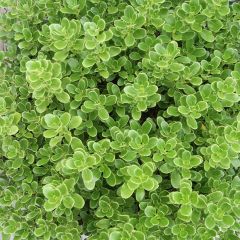
Coprosma Mini Mac
- Flowering time September, October
- Height at maturity 50 cm
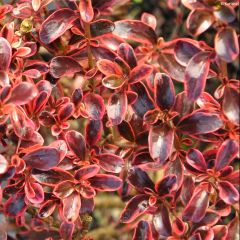
Coprosma repens Fire Burst
- Flowering time September, October
- Height at maturity 1,50 m
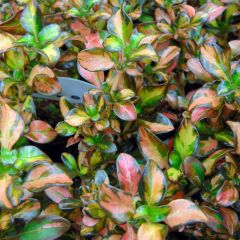
Coprosma Evening Glow
- Flowering time September, October
- Height at maturity 1 m
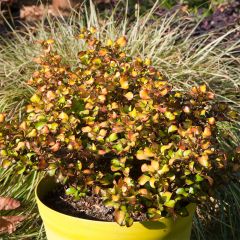
Coprosma robusta Pina colada
- Flowering time September, October
- Height at maturity 1,20 m

Coprosma Pacific Dawn
- Flowering time September, October
- Height at maturity 1,50 m
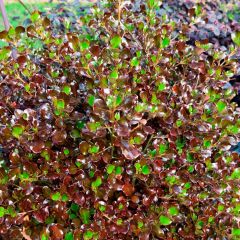
Coprosma Pacific Night
- Flowering time September, October
- Height at maturity 1,50 m
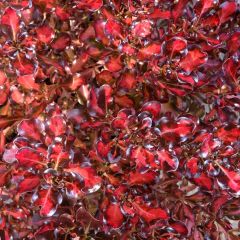
Coprosma Pacific Sunset
- Flowering time September, October
- Height at maturity 1,50 m
Discover other Coprosma
View all →Available in 0 sizes
Available in 1 sizes
Available in 1 sizes
Available in 1 sizes
Available in 1 sizes
Available in 1 sizes
Available in 1 sizes
Available in 1 sizes
Available in 1 sizes
Available in 1 sizes
Planting
Where to Plant Coprosma?
From its New Zealand origins, Coprosma has retained a certain sensitivity and a preference for mild climates. Not very hardy, it begins to suffer at temperatures of -3 or -5 °C (sometimes down to -8 °C at the extreme, in very well-drained soil), and prefers mild winters. Hybrids often show greater resistance to diseases as well as cold. It is only grown in open ground in coastal gardens spared from severe frosts. In regions with harsh winters, it should be grown in a pot on the terrace or balcony throughout the growing season before being stored away for winter in a cool, bright room that is minimally heated or unheated.
Very tolerant of sea spray and drought once well established, Coprosma is an ideal plant for coastal gardens. It enjoys very sunny or slightly shaded exposures in the southern parts of our country and thrives in light, very well-drained soils that are not too dry to moist and free from lime. It tolerates poor soils.
With its dense foliage in changing colours, depending on the varieties, it can be planted as a border, in rockeries, as a low hedge, or at the front of a flowering or mixed hedge that is well protected. Its small size is perfectly suited for pot cultivation.
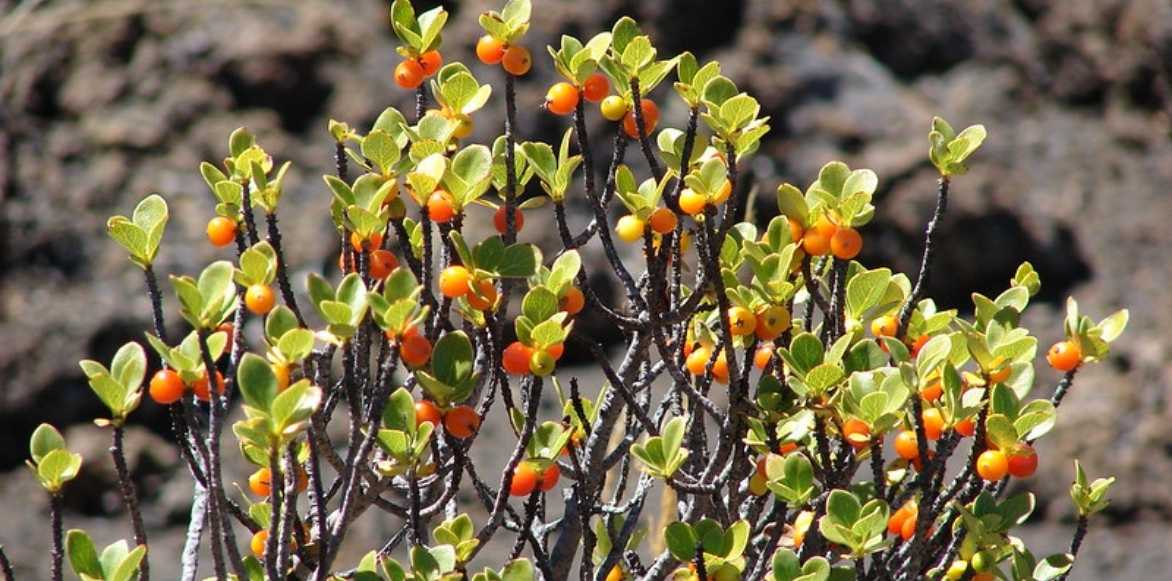
Coprosma montana (© Forest and Kim Starr)
When to Plant Coprosma?
Coprosma should preferably be planted in spring, from April to May, avoiding periods of frost or drought.
How to Plant the Mirror Plant?
In Open Ground
Space the plants 1 m to 1.5 m apart for the larger varieties and 0.5 m to 0.6 m for dwarf Coprosmas. Drainage must be perfect. In water-retaining soil, prefer planting on a mound.
- Dig a planting hole twice the diameter of the root ball
- Add a 10 cm drainage layer (pumice or gravel) at the bottom of the hole if your soil is clayey
- Mix garden soil with peat and a bit of garden sand
- Plant without burying the collar
- Firm the soil and water
- Monitor water supply for the first two years
Pot Cultivation
Choose compact varieties like ‘Mini Mac’.
- Spread a good layer of drainage (gravel or clay balls) at the bottom of the container
- Plant in a mix of leaf compost, heather soil, and river sand
- Water, then provide regular water supply
- Place your pot on a terrace sheltered from scorching sun and strong winds
Maintenance, pruning and care
Coprosma requires little care and maintenance. Ensure it does not lack water during its first summers to aid its establishment. Once well settled, it generally does not need watering in summer in most of our regions, except in cases of prolonged drought. Potted specimens have greater water needs; water once a week throughout the growing season.
In cold regions, when the first cold weather arrives, consider bringing the pots indoors to a bright, frost-free room.
Pruning is not essential; it involves cutting back dead stems damaged by winter cold or faded flowers between April and August. This helps maintain a lovely bushy and compact shape and stimulates the production of new shoots. Prune with a pruning shear, always sparingly.
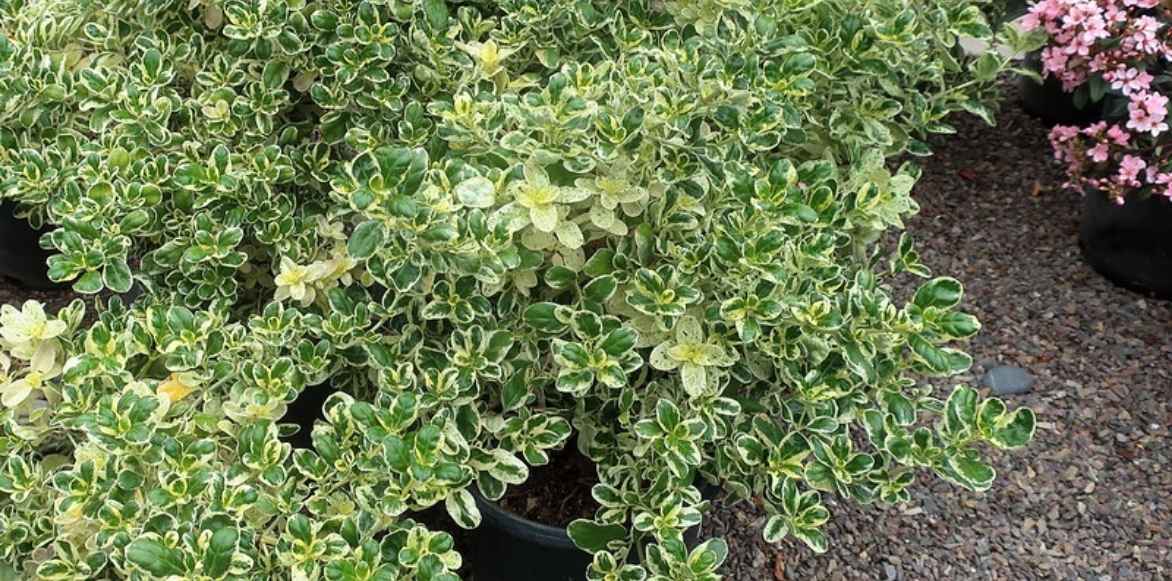
Coprosma repens ‘Marble Queen’ (© Cultivar 413)
Diseases and potential pests
Coprosma is quite resilient. It can sometimes suffer from mealybug attacks, especially if grown in a greenhouse: spray with rapeseed oil to suffocate the unwanted pests.
Multiplication
You can propagate Coprosma by semi-woody stem cuttings in summer.
- Take cuttings of 8 to 10 cm
- Remove the lower leaves, leaving only those at the top
- Plant the cuttings in pots, in a mixture kept moist of river sand and potting soil
- Keep covered until rooting, then protect from frost throughout winter
- Transplant the cuttings into the ground or pots in spring
Associate
Coprosmas are perfect for adding a beautiful, permanent splash of colour, varying from subtle to vibrant depending on the cultivars, to any composition. With their glossy, changing foliage, they play wonderfully with light, awakening the dull areas of the garden throughout the seasons. They are invaluable in a seaside garden.
At the edge of a lush border, the shorter varieties will find their place alongside a mix of brightly coloured perennials: Rudbeckia, Echinacea, Salvia greggii ‘Mirage Burgundy’, phormiums, daylilies, or dahlias, all punctuated with stipas for a delicate, wild touch. The small blue flowers of the sages will make good companions.
Remarkable specimens like ‘Fire Burst’ can be placed in a compact shrub border composed of plants with green foliage (Lonicera nitida), golden (golden oregano, Chamaecyparis obtusa ‘Kamarachiba’, Berberis thunbergii ‘Aurea Nana’, Mexican Orange Blossom), or purple like that of Berberis.
They can be combined in low hedges with any type of shrubs. In autumn, their colourful foliage will harmonise beautifully with smokebushes or heavenly bamboo, Japanese maples, and spindle trees with mahogany hues. They easily accompany other acidophilous plants like Cercidiphyllum japonicum (the Caramel Tree).
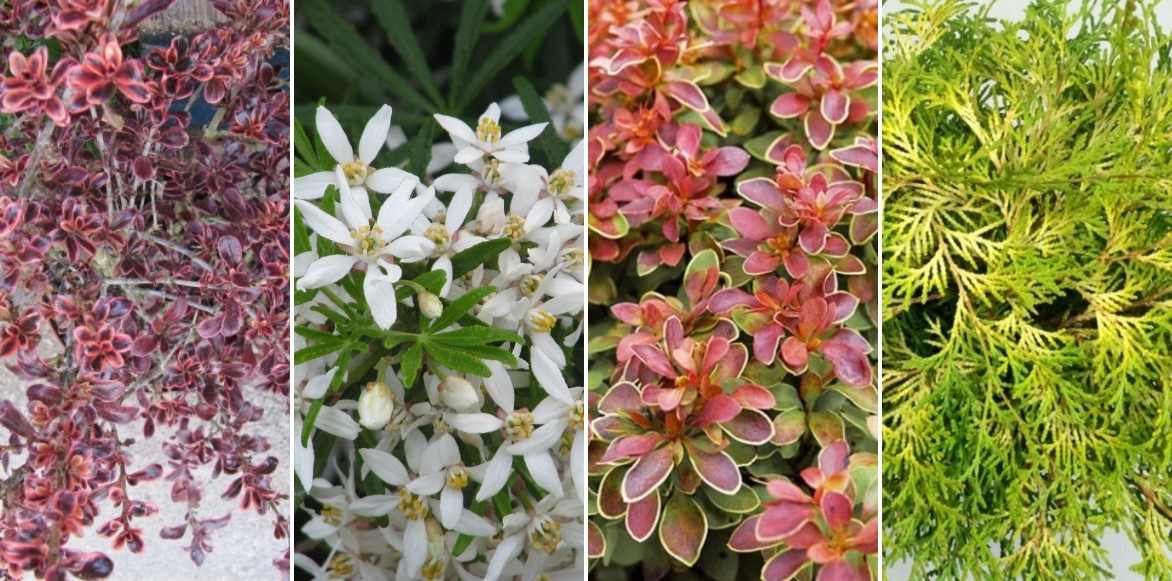
Coprosma ‘First Burst’ (© Leonora Enking), Choisya ternata ‘White Dazzler’, Berberis thunbergii ‘Admiration cov’, and Chamaecyparis obtusa ‘Karamachiba’
- Subscribe!
- Contents































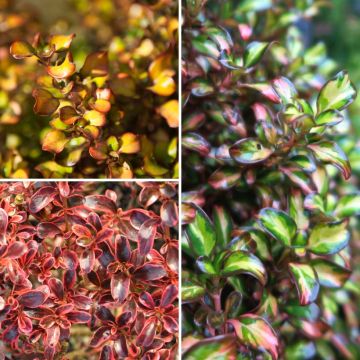

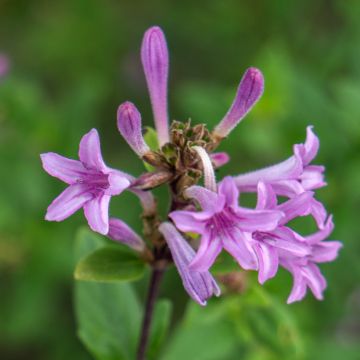

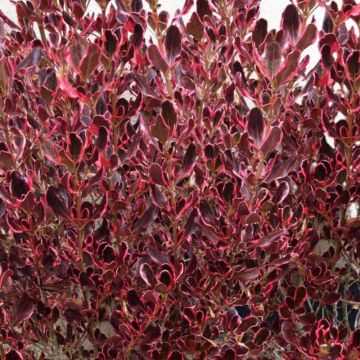

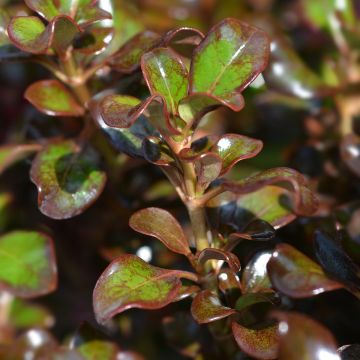
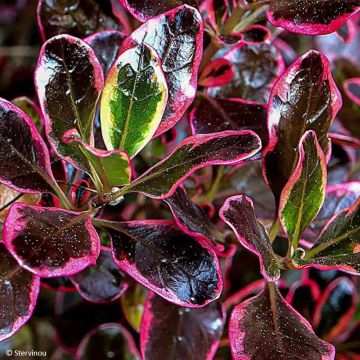
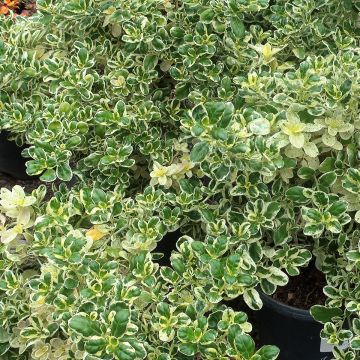
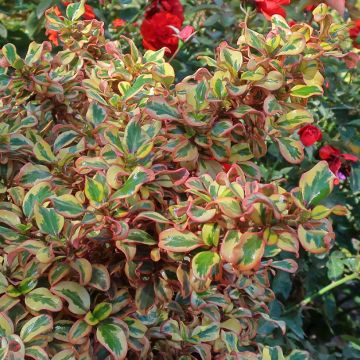
Comments